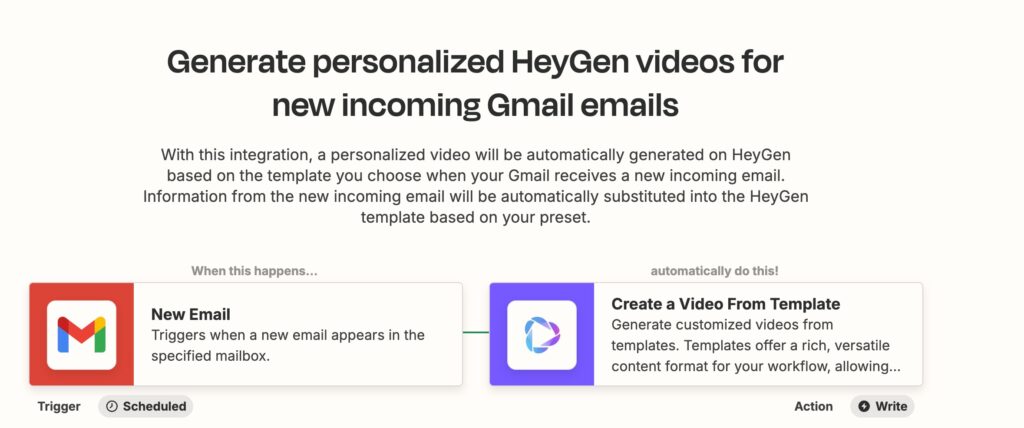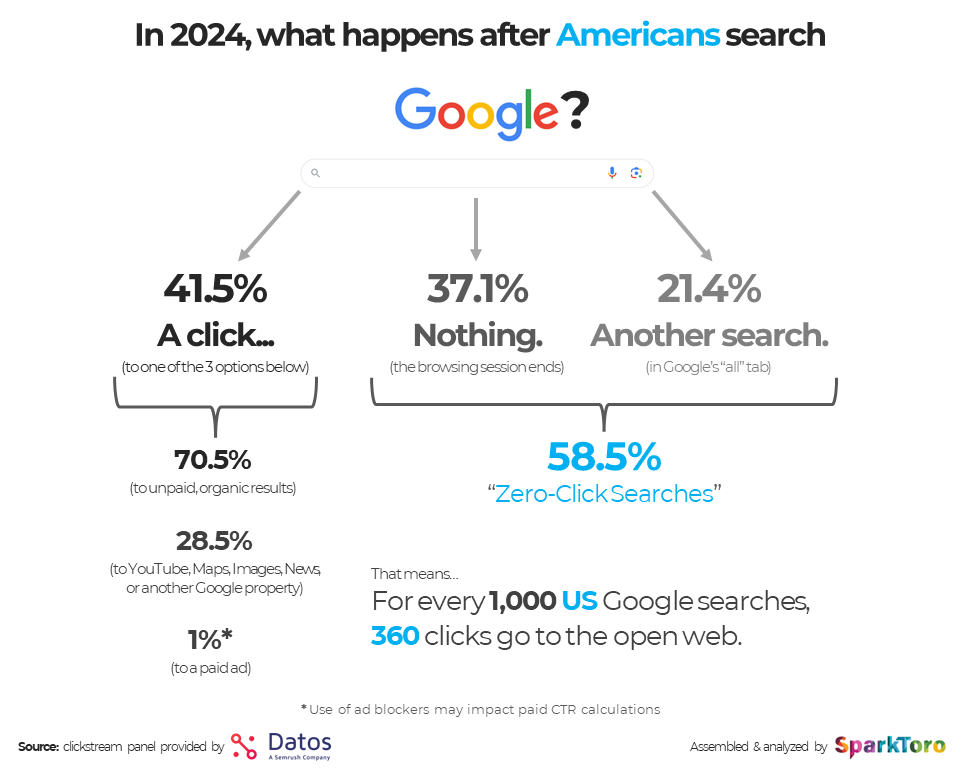SEO in 2025 isn’t about adding a few keywords and crossing your fingers for traffic.
It’s a battlefield where the rules of engagement change overnight … sometimes while you’re sleeping.
The rise of AI tools, algorithm shakeups, and shifting user behavior have created a landscape that feels less like chess and more like speed chess with a broken clock.
Staying ahead doesn’t mean throwing spaghetti at the wall and hoping some sticks.
It means knowing which trends matter, which ones are hype, and where your competitors are fumbling the ball.
If your idea of SEO still revolves around 10 blue links and a sprinkle of meta tags, this article’s going to feel like stepping into the matrix … but in the best way possible.
#1: Embracing AI Beyond Content Creation
SEO veterans often treat AI like the shiny new intern … useful for churning out articles and nothing more.
That’s a rookie move.
AI isn’t just here to help with copy, it’s the Swiss Army knife your marketing strategy didn’t know it needed.
Let’s talk automation.
Tools like ChatGPT and Claude are great for ideation, sure. But the real heavy hitters? They’re working behind the scenes.
Platforms like Screaming Frog now integrate AI to spot crawl errors faster than your team’s best tech lead.
Need to prioritize thousands of broken links? AI’s got you covered. It won’t sigh loudly or demand coffee breaks either.
Here’s a fun one: AI-assisted workflow building.
Picture this … a Zapier integration that will generate videos using HeyGen and automatically send them to customers based on some information from Gmail. That’s not efficiency; that’s witchcraft.

Of course, it’s not all sunshine and rainbows.
Over-reliance on AI for technical audits can sometimes backfire.
Ever seen an algorithm recommend “fixes” for duplicate content that was intentionally canonicalized?
Yeah, that gets awkward. Someone still needs to double-check the AI’s homework.
AI in SEO is like owning a Lamborghini.
If you don’t know how to drive stick, you’re wasting its potential.
Sure, it looks cool sitting in your tech stack but wouldn’t you rather take it for a spin?
#2: Optimizing for Evolving SERP Features
If SEO is war, then the battlefield is shifting … and fast.
Google’s SERPs aren’t just a list of links anymore; they’re a digital Las Vegas strip, flashing everything from AI Overviews to zero-click answers, leaving traditional SEO tactics choking on their dust.
Take the rise of AI-generated search summaries.
These aren’t some harmless side attraction – they’re gobbling up user attention like Pac-Man on a power pellet.
If your brand isn’t the one feeding Google’s AI with clear, concise, and credible information, you’re not even on the map.
It’s time to weaponize structured data.
Structured data isn’t optional anymore … it’s your ticket to appearing in featured snippets, FAQ boxes, and even that omni-present “People Also Ask” section.
Speaking of People Also Ask, have you ever wondered who’s asking these questions?
Sometimes it feels like Google is just spitballing but these boxes are SEO gold if you’re smart about it.
Answer the queries with surgical precision, and you’ll steal traffic without ever cracking the #1 spot.
And don’t even get me started on zero-click searches. They’re the SEO equivalent of window shopping … users get what they need right from the SERP and move on without ever visiting your site.

So, what’s the play?
Make your site irresistible to clicks by going visual.
Infographics, interactive tools, shoppable carousels … anything that makes the user think, “I need to see this for myself.”
The SERP is no longer a passive playing field. It’s alive, dynamic, and ruthless. If you’re not evolving with it, you’re already losing.
#3: Winning with Local SEO and Digital Communities
Local SEO isn’t just for mom-and-pop shops anymore.
It’s become a gladiator’s arena for businesses of every size, especially with Google turning “near me” searches into a default behavior.
You’re not just fighting for clicks … you’re battling for trust, proximity, and relevance.
And spoiler: your half-baked Google Business Profile listing isn’t enough to win the crown.
Start with the basics: accuracy.
Incorrect addresses, outdated phone numbers, and broken links are an instant dealbreaker.
Imagine searching for “late-night tacos” and being sent to a location that’s been a dry cleaner since 2019.
Nobody forgives that. Tools like Moz Local and BrightLocal can help clean up your act.
But the secret sauce isn’t just in the data … it’s in the connections.
Build ties with local digital communities (yes, they still exist).
Platforms like Nextdoor might sound like Karen’s gossip hub, but they’re goldmines for hyperlocal engagement.
And don’t ignore Reddit … there’s a subreddit for nearly every city and niche, from r/ChicagoFood to r/AustinStartups. Be helpful, be visible, and … this should go without saying … don’t spam.
Content is your currency.
Think beyond generic blog posts.
What about a guide to your city’s hidden gems?
Or a TikTok video series on “Best Lunch Spots Within Walking Distance of [Insert Major Landmark]”?
It’s not just useful; it’s shareable. And if people are sharing your stuff, Google takes notice.
The real MVP of local SEO, though? Reviews.
Glowing ones are great, but don’t shy away from addressing the bad ones either.
A well-handled one-star review can do more for your reputation than a dozen five-star shoutouts.
(Pro tip: Don’t copy-paste “We’re sorry for your experience” replies. It’s transparent and lazy.)
Here’s a curveball: micro-events.
Partner with local influencers (not the cringe kind) to host workshops, meetups, or giveaways.
Even better, tie these events into a cause. “20% of proceeds go to local shelters” hits differently than “10% off this weekend.”
Ignore local SEO, and your competitors will thank you for handing them the keys to your neighborhood.
Embrace it, and you’ll be the one locking down that coveted map pack slot.
#4: Video and Visual Dominance in 2025
YouTube isn’t just the second-largest search engine—it’s a cultural juggernaut.
From “how-to” videos to unboxing ASMR, users aren’t reading … they’re watching.
Ignore this shift, and your brand risks becoming the digital equivalent of a silent movie in the age of TikTok musicals.
Start with this: people want snackable content.
No one’s watching your 20-minute PowerPoint overview on supply chain management.
Instead, they’re hunting for 90-second explainers, eye-catching animations, or POV walkthroughs shot on an iPhone 15.
Keep it short, keep it punchy … and for the love of all things clickable, use subtitles. Half of your audience is watching on mute (probably while procrastinating at work).
And let’s not forget about YouTube Shorts and Instagram Reels.
They’re not just for influencers flaunting protein powders.
Brands like Duolingo and Wendy’s have leveraged these formats to break the corporate mold … sometimes hilariously, sometimes cringey (but it works).
These platforms reward consistency, so don’t stop after one or two attempts.
This isn’t just “upload and pray for views.”
Your video’s title, thumbnail, and description need to hit harder than a Marvel movie teaser.
And don’t skimp on tagging … Google is ravenous for metadata.
Schema markup for videos? Non-negotiable if you want rich snippets to serve your content.
And for those thinking, “Video doesn’t apply to my industry,” think again.
A B2B SaaS company can transform dry stats into sleek infographics or demo their interface in real time.
A bakery can live-stream the creation of their top-selling cake, with recipe shoutouts sprinkled in like chocolate chips.
Failure here usually comes from overthinking. Perfect lighting? Forget it. Shoot that testimonial in your client’s cluttered office if you have to … it’s authenticity that wins eyeballs. Polished? Overrated. Engaging? Mandatory.
Because let’s face it: if your competitors are on TikTok showing their behind-the-scenes, and you’re still writing blogs about “industry trends,” who do you think the audience remembers?
#5: Building and Maintaining Brand Equity
SEO isn’t just about keywords and rankings anymore … it’s about trust.
If people don’t recognize or believe in your brand, Google won’t either. And no, slapping a shiny new logo on your website doesn’t cut it.
Think about it: when was the last time you clicked on a brand you didn’t know in the SERPs?
Exactly.
Brand equity is your golden ticket to higher click-through rates, lower bounce rates, and longer time-on-site stats … all things Google adores. But building equity? That’s the grind.
Start with authority.
Expertise-Authoritativeness-Trustworthiness (E-E-A-T) isn’t some corporate buzzword … it’s Google’s Bible. To play the game, you’ve got to bring receipts.
Showcase your awards, link to press features, and flaunt that customer review from Sarah B. who called you “the best thing to happen to the industry since sliced bread.”
And let’s talk authorship.
Anonymous blog posts don’t fly anymore. Attach real names, with real credentials. If Dr. James Andrews wrote your piece on orthopedic best practices, you’d better let people know.
Bonus points if James has a LinkedIn profile dripping with endorsements.
But brand equity isn’t all polish … it’s also personality. Wendy’s Twitter roasts rivals for sport, and it works. You’re not Wendy’s? Fine. But find your lane.
People want to connect with brands that feel human, not like a soulless vending machine. (Translation: ditch the corporate jargon and crack a joke once in a while.)
And consistency. Please. If your tone is snarky on Instagram but stiff as cardboard on your website, you’re confusing your audience.
Pick a lane and stick to it … across ads, socials, blogs, and even your email campaigns. Think Apple: sleek, clean, iconic. You know their voice before you even see their logo.
What about branded searches? If people aren’t Googling your name alongside keywords like “pricing” or “review,” you’ve got homework to do.
Build buzz through PR, launch something worth talking about, or just go wild with a guerrilla marketing stunt (Red Bull parachute jump, anyone?).
Yes, this takes time. But here’s the trade-off: a strong brand turns every click, search, and interaction into something more meaningful. You’re not just a website … you’re a name people remember.
Future-Proofing SEO
If SEO in 2025 feels like a sprint, you’re running the wrong race. It’s a marathon … but on a track that Google keeps rearranging.
The secret isn’t just to adapt; it’s to anticipate. Think less “reactive firefighting” and more “chess master plotting five moves ahead.”
Future-proofing is a mindset.
How are you preparing for decentralized search? Platforms like Perplexity have already made waves, and we all know how fast a disruptor can catch fire (hello, TikTok). Don’t assume Google will always be the kingpin.
And let’s be real: not everything will work.
Some tactics will flop harder than a failed startup pitch on Shark Tank. Expect it. Plan for it. Experiment anyway. The brands that win aren’t afraid to burn a few bridges in pursuit of something better.
The biggest risk isn’t trying new strategies—it’s sticking to old ones. SEO isn’t static, and neither are the users. Future-proofing isn’t about keeping up; it’s about staying ahead.
The difference? Survival.
And that’s not just a strategy .. it’s the game.
